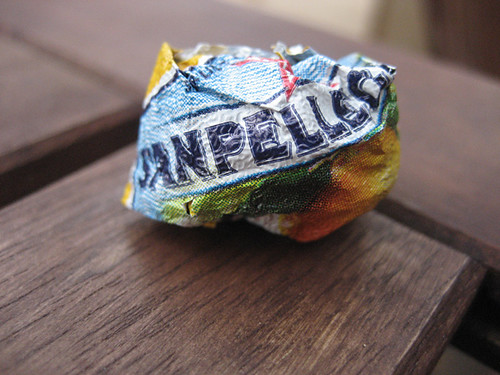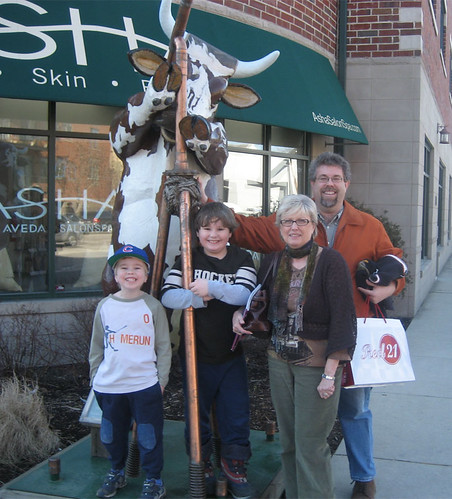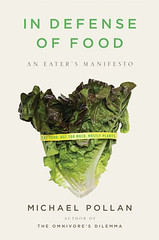Ghosts Before Breakfast, by Hans Richter.
The final cut of the next podcast is complete and the computer needs some time to itself— 4 or 5 hours— to turn it into a Quicktime file for uploading. A few notes I feel like taking note of:
• The fourth podcast, A Head’s Tale, will shortly have had 1000 viewers at Vimeo. (It’s been stuck at 998 all day, frustratingly. I don’t normally watch things that closely, but— go to 1000, dammit! UPDATE LATE MONDAY NIGHT: Finally!) This is the kind of milestone that really encourages me to keep doing this— 1000 people watching it all the way through. Cool. (As opposed to the 4 or 5 who read this blog.)
• Interestingly, the second podcast, Duck School, also had a big boost in viewership recently. A thread on LTHForum recounted Sun Wah’s recent temporary closing by the Health Department (not an unusual thing in Chinatown— personally, I think Sun Wah is MUCH cleaner than it used to be). Some people were reacting rather harshly to this news, so I linked to the podcast and said “You want to see how clean Sun Wah’s kitchen is?” I figured two or three people might go watch it. The actual number was 81. The first day. Over 100 new viewers checked it out as a result in the last 3 days (typically it would draw one or two viewers a day by now). A little insight into what drives traffic, I guess….
• Week before last, I went to Green City Market on its last day of the season in the park before moving indoors to shoot some footage for what, at this point, will probably be podcast #8 in February. It’s about Oriana Kruszewski, the little Asian lady who sells pears, paw paws, black walnuts and some other oddities in her own inimitable fashion. (The pears are wonderful, I had some that had gotten a little old in the fridge and made an aigre-doux, a form of sweet pickling with them.) Anyway, while I was there I saw another camera crew— not an unusual thing there— probably students from Columbia College or the like, a young woman directing, a couple of guys hauling Canon XL-1s around for her, and various other people doing sound or being key grips or who knows what.
It struck me that one of the things that everyone seems to do is feel like they need to turn film or video production into, well, a big production. The young woman was clearly enjoying expressing her vision in the form of commands to her crew, the videographers were busy getting just the right shots, and so on. Meanwhile, there I am just walking around, camera in hand and bag on my back, getting what I need with no fuss in much less time and, I feel certain, getting enough pretty footage of pretty food in sunlight that there will be a certain visual grace to my rough and ready production. I really like that the low cost and low weight of my style production makes it possible to just grab and go and shoot what I need so easily; if I were the teacher of these kids, I wouldn’t be sending them out in a pack of 6 with two cameras, I’d send them out by themselves with a single camera and make them rely on themselves and find their own subjects and be part of their movie the way I am. It’s a pen, write with it, don’t have a scribe to write for you and two bearers to carry it….
• It’s a small food world #1: I was shooting the next podcast at Blackbird and the pastry chef, Tim Dahl, mentions that the dessert will include Asian pears. Mike Sula, who’s working on it with me, says “Are they Oriana’s?” They were. (Mike did a piece on her in the Reader a couple of years ago.)
• It’s a small food world #2: I’m standing at Oriana’s stand, getting a panning shot of the Green City Market, and suddenly a guy in my frame turns and looks at me and waves. It’s Paul Virant of Vie— who’s another one of the chefs in my next podcast.
• A little about the next podcast: it’s about the mulefoot pig dinner that the Reader arranged with Paul Kahan of Blackbird, who recruited several other notable chefs such as Virant to participate. Sula has been writing about mulefoot pigs for 18 months and so he recruited me to tag along and shoot everything— the farm, the slaughter process, and as much of the cooking of the meal as we could get access to. Kahan and company were really great about allowing us so much access and being gracious about it in the midst of busy times (especially for The Publican, which had just opened to much more business than they were quite ready for).
One of my goals in doing these podcasts was to keep them under 20 minutes. That seemed a good maximum length. So I cut each individual segment for this one, and put them together, and I found I had slightly exceeded that maximum.
By 16 minutes.
36 minutes. Yikes. Not an insane amount of time for the subject— it’s less than an hour-long Food Network show minus commercials— and considering that I had three podcasts’ worth of subject matter here— farming, slaughter, cooking— not a self-indulgent amount, I feel sure. But I really doubted whether my audience would sit for that in one go. It seemed like it would scare people off, just the running time alone.
There was another issue. Slaughter is an emotional subject, an emotionally charged one, a viscerally affecting one. If I followed the story chronologically, slaughter would come in the middle somewhere, and make everything that followed look barbaric. I also felt my subject had something to do with the fact that it’s too easy to separate meat from animals, to mentally disassociate a square of meat from a living creature, and that honesty demanded that I keep the reality of the animal’s life and death in the story, not let the viewer push it out of mind once it’s done and we’re on to more congenial cooking subject matters.
So I came to two decisions. One was, to break the saga up into two parts. The second was, to jumble it up chronologically, so that you’re always conscious of meat-eating when looking at cute piggies, and vice versa. So part 1, which will go up later this week, runs just under 20 minutes (whew!) and bookends our (quite charming) visit to the farm with footage about the handling of the meat at the restaurants. Part 2, which will go up next week, will include the slaughter sequence, again in the context of the restaurants as they work on the meal. (We weren’t allowed to shoot the moment of death, but I got everything else about the slaughtering process, believe me.)
Watch for Part 1— officially Thursday, actually Wednesday night.


 Posted in
Posted in 











